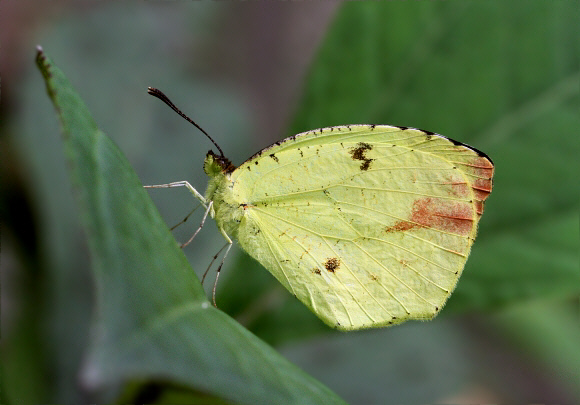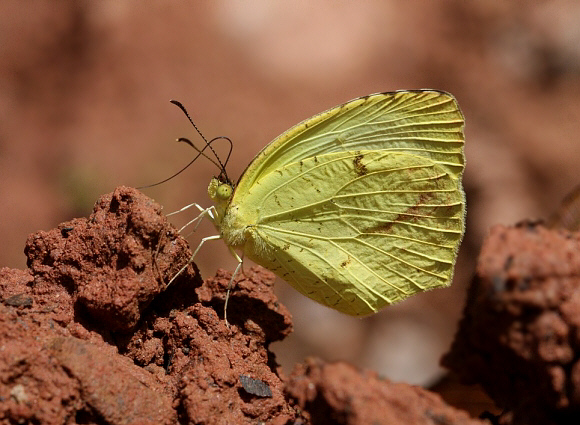
Introduction
The genus Eurema was until fairly recently represented in the neotropics by about 30 species, but several have now been reclassified as Pyrisitia, leaving a total of 19 currently recognised species in the neotropical region. Elsewhere in the world the genus has 9 species in Africa, 2 in Madagascar, and 9 in the Oriental and Australian regions.
These smallish butterflies are characterised by having yellow or white uppersides, with dark apical markings. The forewings have a strongly curved costa and a squarish apex. The hindwings are rounded in most species, but in salome, xantochlora and arbela the termen is projected to a point.
The various species can be told apart by the pattern of mottled dark markings on the underside hindwings, and by the black borders on the upperside forewings, which differ according to species.
Eurema arbela is found from Mexico to Bolivia.
This species was previously known as Eurema boisduvaliana, hence the common name.
Habitats
This is a pre-montane cloudforest species, occurring along roadsides, riverbanks and forest edge habitats at elevations between about 400-2000m.
Lifecycle
To be completed.
Adult behaviour
Males are usually encountered singly, or occasionally in two’s or three’s, seen imbibing dissolved minerals from damp ground at the edge of ditches, runnels or roadside banks in forested areas.
Females are more often seen nectaring at flowers along roadsides and riverbanks, or when exploring sunny wood edge habitats in search of egg-laying sites.
The flight is fluttery but fairly rapid, and always close to the ground.

